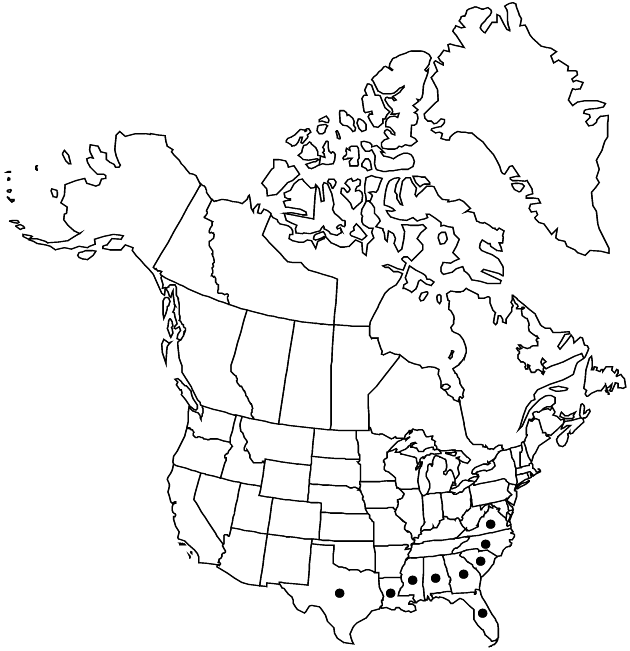Eupatorium mohrii
Contr. U.S. Natl. Herb. 6: 762, plate 11. 1901.
Perennials, 30–100+ cm. Stems (from tuberous rhizomes) multiple, densely branched distally, puberulent throughout. Leaves usually opposite (distal sometimes alternate); sessile or subsessile; blades 3-nerved distal to bases, oblanceolate, 20–80 × 5–10(–20) mm, bases cuneate, margins serrate proximally, entire distally, apices acute, faces puberulent (abaxial), glabrous or glabrate (adaxial), gland-dotted. Heads in corymbiform arrays. Phyllaries 7–10 in 1–2 series, oblanceolate, 1–3 × 0.2–0.5 mm, apices rounded, abaxial faces puberulent, gland-dotted. Florets 5; corollas 2–4 mm. Cypselae 1–2 mm; pappi of 20–30 bristles 2.5–3 mm. 2n = 20, 30, 40.
Phenology: Flowering Jul–Sep.
Habitat: Moist, low ground, margins of ponds, sandy soils
Elevation: 10–100+ m
Distribution

Ala., Fla., Ga., La., Miss., N.C., S.C., Tex., Va.
Discussion
As treated here, Eupatorium mohrii includes both sexual diploid (sometimes segregated as E. recurvans) and apomictic polyploid populations that are suggested by molecular data to be autoploids. Eupatorium saltuense refers to hybrids shown by molecular data to involve E. mohrii and E. serotinum. Molecular data also document frequent hybridization with E. rotundifolium.
Selected References
None.